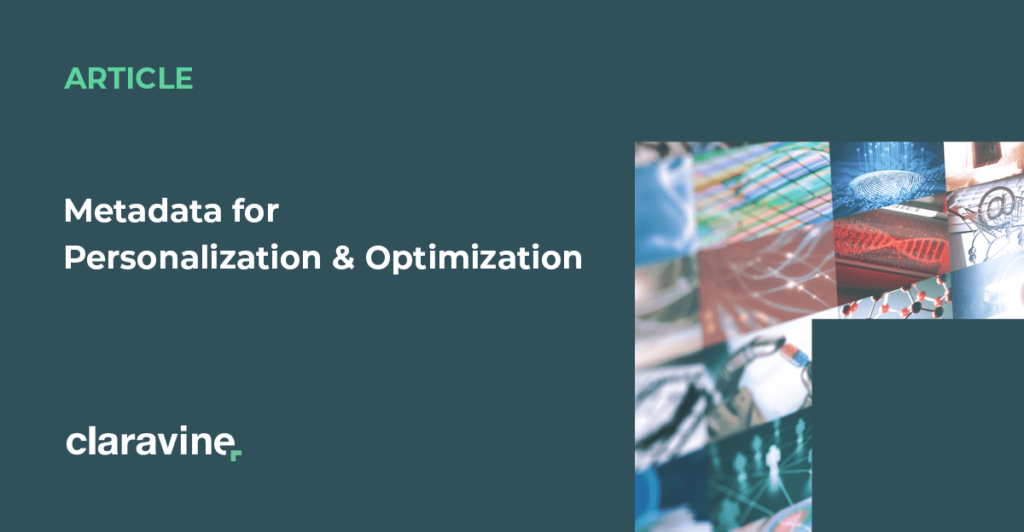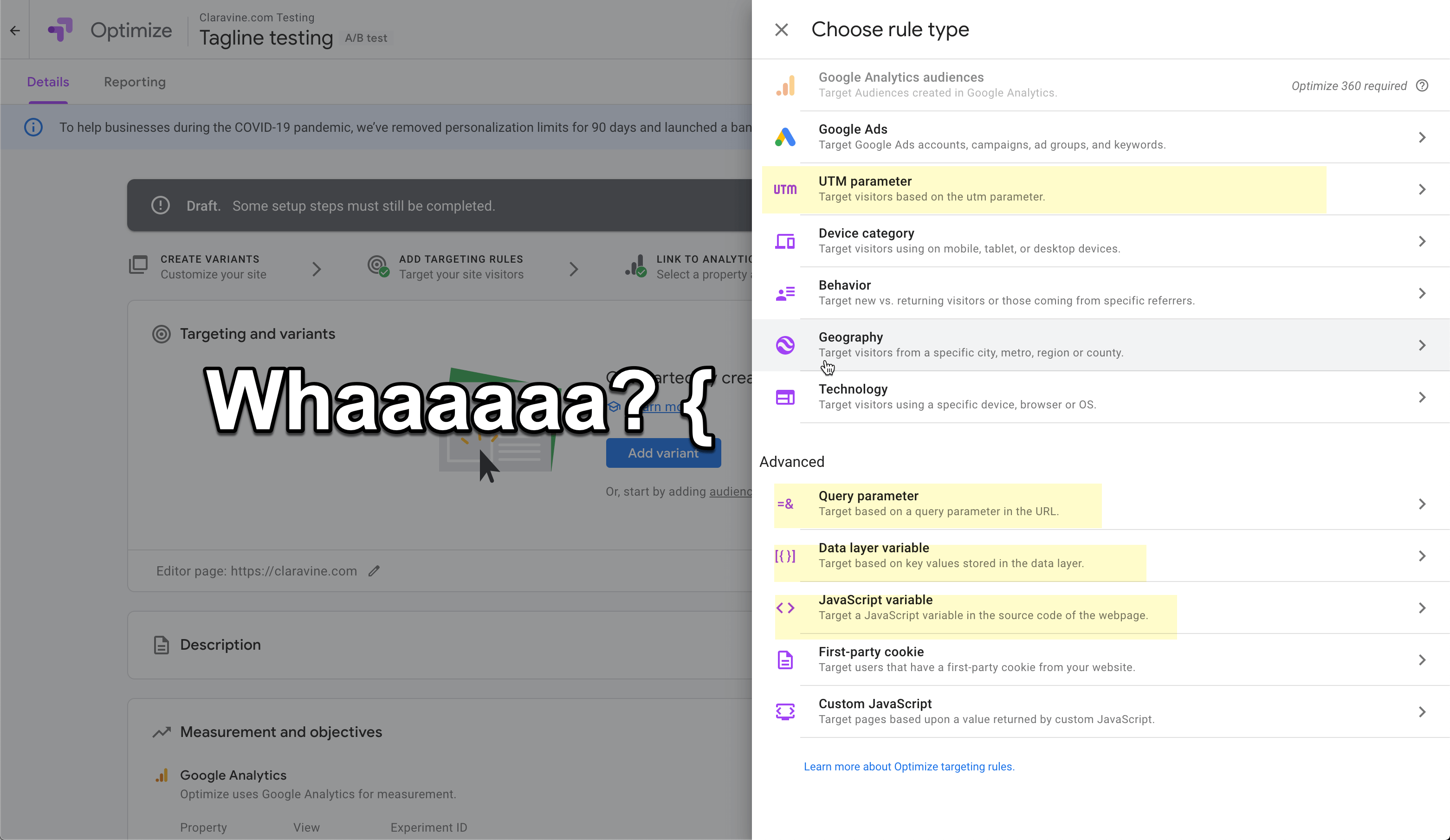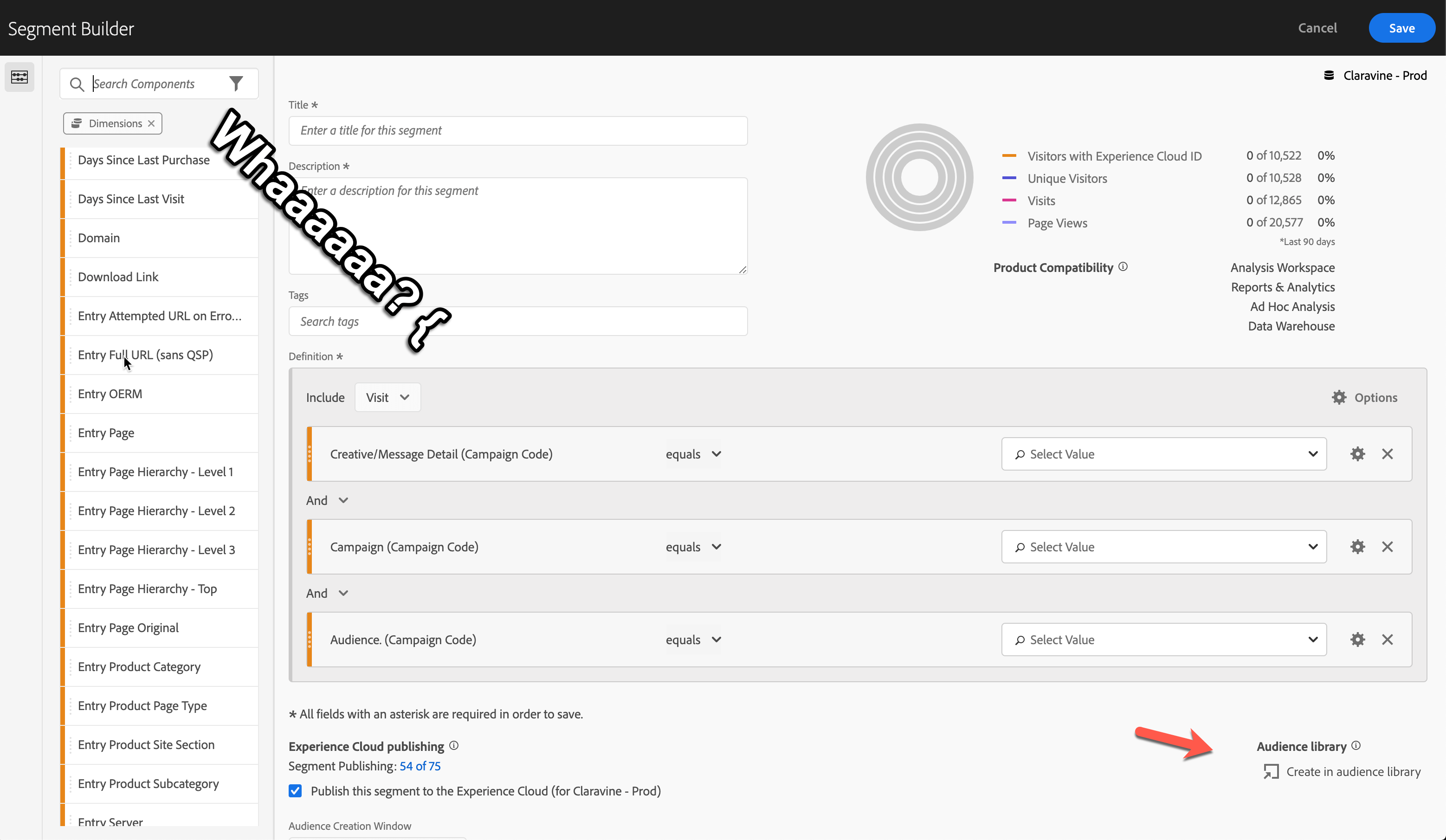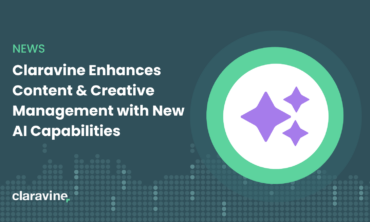Use Metadata for Personalization and Optimization

It’s surprising to me how much marketing metadata is overlooked. Honestly, in many organizations, it is hardly discussed. Maybe the people responsible for it are hiding a mess and don’t want to talk about it? Or there could also be a misnomer about metadata – reserved for digital photography or technical SEO?
However, I think that digital leaders are simply underestimating the value or potential of marketing metadata. Or they simply don’t understand what it is (here’s a checklist).
Yet, Google has prioritized it. So has Adobe. And many other large enterprises have as well.
Need an example?
Just for fun, let’s focus on the testing and personalization use cases for metadata alone – use cases that can result in millions of $ in improvements for big brands when done correctly.
Have you used Adobe Target or Google Optimize of late? If so, you’re probably well aware that you can build experiments or personalization based on, welp, metadata. If you haven’t, time to investigate.
Google example:

Adobe Example:

These two behemoth companies have focused on audience metadata as a primary selection in the segmentation component of their personalization and testing technologies. Considering that, shouldn’t audience metadata be prioritized by your brand as well?
I want to further note that this isn’t behavioral data, which was a historical standard for testing…only worse to unsegmented A/B or multivariate testing. (Oh hey I clicked on something so change my digital experience…) I am referring to granular segmentation on product offers, messaging, CTAs, audiences, and so forth. When you customize those audience experiences down to those levels of segmentation, you can expect your conversions to increase.
Why is this important?
Though this seems like a no-brainer, your channel marketers are likely unaware of the power behind metadata and/or your agencies may not even know what metadata you want to collect. However, your testing and optimization team does know the value and use of metadata, though. The question is: are they synced up with all the people creating content, campaigns, and corresponding metadata to power testing and personalization?
Doubtful.
Think about this…your channel marketers and agencies are out there creating campaigns, spending hundreds of thousands of dollars to run them and your testing and optimization team set up tests/personalization expecting values for the audience segments. Yet, not all of the data was there.
Perhaps a campaign name or offer was misspelled, preventing them from entering the audience segment connected to firing a personalized experience. Maybe an audience variable was forgotten in a query parameter that your split test is expecting and the test does not fire.
This happens more often than you might think. And for high volume marketing campaigns, the loss can be significant.
How it might impact you
Let’s say you run a campaign to a $20 product and drive 1 million visits to a split test landing page via paid advertising. The control (version A) converts sales at 1% – an industry average for many sites. Perhaps your sole variant (version B) has bumped the conversion rate up to 2.5% – not a stretch of the imagination but still leading to a tangible revenue lift. If this is a straight 50/50 test, you’ve made $350K in sales. $250K came from the improved lift of version B.
However, what really happened was a piece of audience metadata that would cause the test to fire was missing from 50% of the traffic so the test didn’t fire 50% of the time it should have. Only 250K visitors actually saw the test resulting in only $125K contribution to sales – a $75K loss in total campaign revenue (not $125K because the traffic meant for the split test converted at 1% instead of 2.5%). Here’s the summary:
This example is slightly oversimplified but this is not an uncommon scenario. And further, it doesn’t account for any product add-ons during the check that increase the AOV beyond just a $20 product purchase. By the way, those product add-ons are driven by personalization and metadata – all the more reason to get the metadata right.
Think about the historical lift personalized experiences have had for your business? Do your past results indicate that a more personalized experience leads to higher conversion rates?
“Visitors who viewed three pages of personalized content had a conversion rate of 3.4%, double the rate (1.7%) for those who were exposed to two pages with personalized elements. Add-to-cart rates also experienced a large (+74%) increase between the second (9.6%) and third (16.7%) page views.” Source: Marketing Charts
Where’s the breakdown?
Your agencies and internal teams are out there creating campaigns, spending hundreds of thousands of dollars to run them, and then they don’t have a personalization experience (sans maybe the respective landing page) to complement the effort. They’re accountable for results, but probably don’t even realize they could be increasing conversions if they were enriching their campaigns with metadata that trigger more personalized audience experiences – which today, these personalized experiences are expected by consumers.
For a little more advanced example than the simplistic split test above, many marketing automation solutions use campaign metadata to trigger automation and dynamic content. They can store and use metadata retrieved from the data layer to trigger automated experiences. If you’re at all familiar with Segment, you know first-hand how website events can pass data layer information over to your execution platforms. Those data layers can be populated with your tracking link parameters.
So if your tracking link is missing or has misspelled, values aka campaign metadata, your personalization and automation become faulty or fails altogether. And this is just one of many ways to have metadata flow and used within the technologies that drive your digital experiences.
What should I do?
Some digital leaders believe that marketing metadata is a vastly overlooked element to successful digital campaigns – but people are too busy/over-stretched/uninformed to prioritize it. All digital leaders need to look to this data source, often human-created, as a core component to successful marketing.
Surprisingly, it’s not currently a focus for many. If you’re in this camp, I’d start looking at creating an enterprise marketing taxonomy. If you’ve already done this and are wondering how to actually apply it correctly across teams and agencies, that’s when we should talk.


